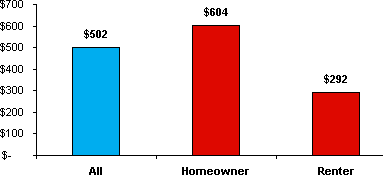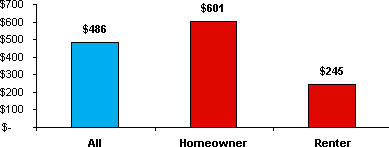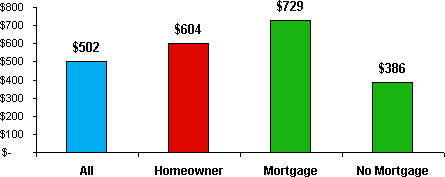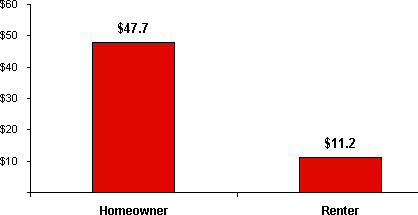IDEX Online Research: Consumer Jewelry Expenditures - Homeowners More Likely to Buy Jewelry
August 29, 07
A home-owning consumer is likely to spend twice as much on jewelry as a consumer who is renting. That’s a huge disparity, and one that jewelers should use as an opportunity.
When sales associates are making “small talk” with a potential customer, they might ask where the customer lives. Most towns and cities have clearly delineated areas where renters and homeowners are likely to live. Further, when filling out the credit application, the sales associate should perk up at the magic word “homeowner.” That means this customer probably has significant credit potential and should be up-sold.
The following graph summarizes the potential jewelry expenditures between home-owning households and renting households.
| Annual Household Jewelry Expenditures |
The only significant difference between the 2005 statistics relating to jewelry expenditures and home ownership is that the gap closed moderately between home owners’ jewelry spending and renters’ jewelry spend, as the graph below illustrates.
| Annual Household Jewelry Expenditures |
Homeowners with a Mortgage Spend More on Jewelry
It may come as a surprise to learn that homeowners with a mortgage spend more on jewelry than those without a mortgage. The graph below illustrates this difference.
| Annual Household Jewelry Spending by Homeowner |
However, the explanation becomes clear when income levels are compared. Homeowners with a mortgage typically earn 43 percent more than homeowners without a mortgage, as the following table illustrates.
| Household Income Income $72,432 |
Homeowners Represent a Huge Market
Clearly, homeowners represent the best jewelry market based on expenditures per household. Further, as a market segment, their aggregate expenditures are by far the largest, as the graph below illustrates.
| Total Annual Jewelry Consumption - Housing Tenure |
Many jewelers use total market spending potential, rather than spending per household, as a way to measure market potential. The theory is simple: spending per household may be high, but if there aren’t many households, there isn’t much of a market.



